Project Log: Saturday, December 21, 2013
Next on the agenda was to paint the hull, a big enough
job in and of itself, but relatively straightforward
compared to the complicated deck.
To begin, I masked off the freeing port openings in the
bulwarks, this time from the inside to protect the
newly-painted decks from hull overspray.
|
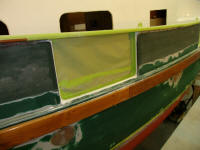
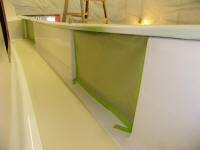
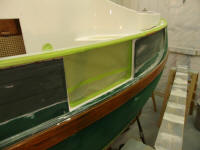
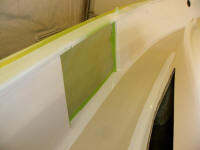
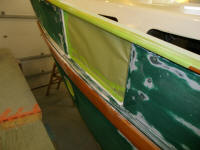 |
Then, I draped the decks in plastic sheeting, and masked
it securely all along the caprail, and masked off any
other areas around and beneath the caprails, along with
the anchor rollers and stem casting. |
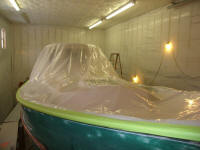
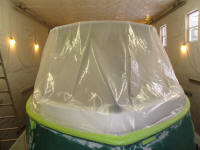
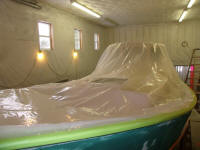
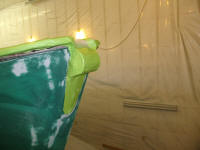 |
Next, I reset the staging at hull height, leaving the
forward sections higher to allow me to reach all areas.
Once that was done, I vacuumed and solvent-washed the
hull before continuing the masking work, as the hull was
coated with dust after the deck work and in the years
since I'd actually last worked on the hull. |
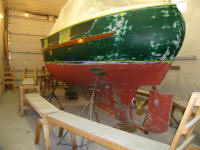
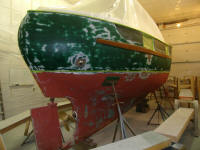
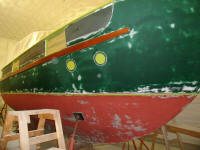 |
This view of the hull from the bow always reminded me of
a photo of the original Queen Mary in drydock
that was in a book I had when I was a kid.
|

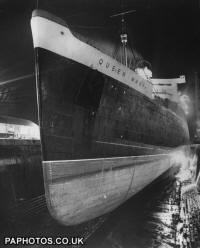 |
I'd already struck and masked off the waterline much
earlier, when I moved the boat for painting, so the
remaining masking was straightforward. I added a
strip of masking paper to protect the bottom from
overspray, and wrapped up the teak rubrails and three
through hull fittings (engine exhaust and diesel boiler
exhaust and intake fittings), bringing the major
preparation work to a close. |
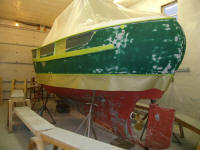
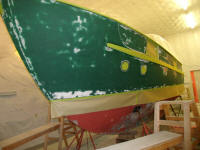
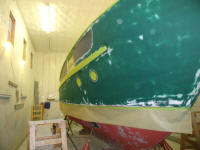
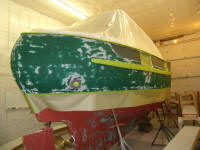 |
Next: final preparations and high-build primer.
|
Total Time Today: 5.5 hours
|
<
Previous |
Next > |
|
|



















